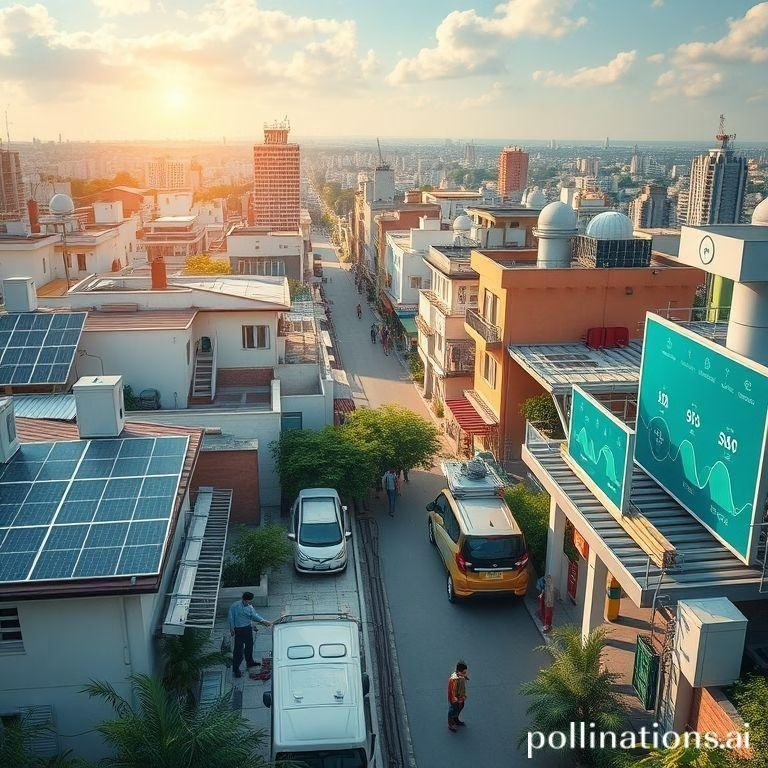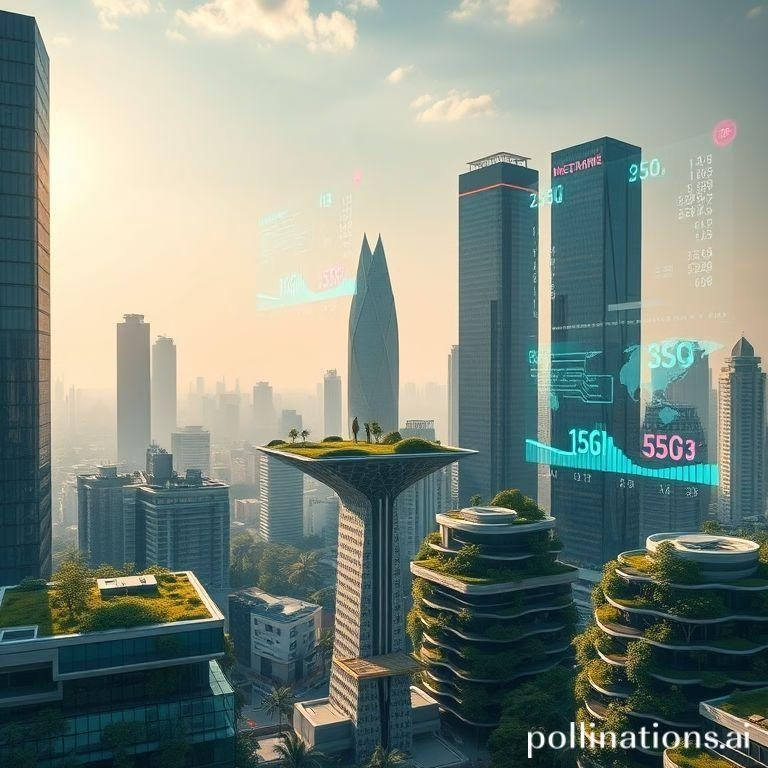AI in Logistics: Revolutionizing Route Optimization and Delivery Automation
In an era of global supply chain volatility, AI emerges as the catalyst for unprecedented transformation in logistics operations. This article explores how artificial intelligence is revolutionizing route planning, delivery automation, and overall supply chain management through predictive analytics and autonomous systems. Discover real-world applications, implementation strategies, and the ROI potential of AI-driven logistics solutions.
The Evolution of Logistics Technology
The logistics sector has historically faced significant operational challenges. These include inefficient route planning and limited real-time visibility. Manual processes led to errors, delays, and increased costs. The shift from these manual methods to systems powered by sophisticated algorithms marks a turning point. These algorithms optimize routes, predict potential disruptions, and automate delivery processes. Early adopters demonstrated the transformative potential of technology. They achieved substantial improvements in efficiency and customer satisfaction. This transition underscores the importance of embracing technological advancements to stay competitive.
- Enhanced efficiency
- Reduced operational costs
- Improved customer satisfaction
AI-Powered Route Optimization Mechanics
The logistics sector has historically faced significant operational challenges. These include inefficient route planning and limited real-time visibility. Manual processes led to errors, delays, and increased costs. The shift from these manual methods to systems powered by sophisticated algorithms marks a turning point. These algorithms optimize routes, predict potential disruptions, and automate delivery processes. Early adopters demonstrated the transformative potential of technology. They achieved substantial improvements in efficiency and customer satisfaction. This transition underscores the importance of embracing technological advancements to stay competitive.
- Enhanced efficiency
- Reduced operational costs
- Improved customer satisfaction
Automation in Last-Mile Delivery
The logistics sector has historically faced significant operational challenges. These include inefficient route planning and limited real-time visibility. Manual processes led to errors, delays, and increased costs. The shift from these manual methods to systems powered by sophisticated algorithms marks a turning point. These algorithms optimize routes, predict potential disruptions, and automate delivery processes. Early adopters demonstrated the transformative potential of technology. They achieved substantial improvements in efficiency and customer satisfaction. This transition underscores the importance of embracing technological advancements to stay competitive.
- Enhanced efficiency
- Reduced operational costs
- Improved customer satisfaction
Integration Challenges and Solutions
The logistics sector has historically faced significant operational challenges. These include inefficient route planning and limited real-time visibility. Manual processes led to errors, delays, and increased costs. The shift from these manual methods to systems powered by sophisticated algorithms marks a turning point. These algorithms optimize routes, predict potential disruptions, and automate delivery processes. Early adopters demonstrated the transformative potential of technology. They achieved substantial improvements in efficiency and customer satisfaction. This transition underscores the importance of embracing technological advancements to stay competitive.
- Enhanced efficiency
- Reduced operational costs
- Improved customer satisfaction
Future of Autonomous Supply Chains
The logistics sector has historically faced significant operational challenges. These include inefficient route planning and limited real-time visibility. Manual processes led to errors, delays, and increased costs. The shift from these manual methods to systems powered by sophisticated algorithms marks a turning point. These algorithms optimize routes, predict potential disruptions, and automate delivery processes. Early adopters demonstrated the transformative potential of technology. They achieved substantial improvements in efficiency and customer satisfaction. This transition underscores the importance of embracing technological advancements to stay competitive.
- Enhanced efficiency
- Reduced operational costs
- Improved customer satisfaction
The Evolution of Logistics Technology
AI-powered route optimization relies on sophisticated algorithms. Algorithms like Dijkstra’s find the shortest path. Machine learning models predict traffic conditions. These models analyze historical data and real-time inputs. This enables dynamic route adjustments. Real-time traffic prediction systems use sensors and data. They adapt to changing conditions. This minimizes delays and fuel consumption. Traditional routes use static data. AI-driven routes adapt to real-world conditions. AI routes can yield 20-30% cost savings. This is due to reduced fuel consumption and optimized delivery times.
- Dijkstra’s algorithm
- Machine learning models
- Real-time traffic prediction
AI-Powered Route Optimization Mechanics
AI-powered route optimization relies on sophisticated algorithms. Algorithms like Dijkstra’s find the shortest path. Machine learning models predict traffic conditions. These models analyze historical data and real-time inputs. This enables dynamic route adjustments. Real-time traffic prediction systems use sensors and data. They adapt to changing conditions. This minimizes delays and fuel consumption. Traditional routes use static data. AI-driven routes adapt to real-world conditions. AI routes can yield 20-30% cost savings. This is due to reduced fuel consumption and optimized delivery times.
- Dijkstra’s algorithm
- Machine learning models
- Real-time traffic prediction
Automation in Last-Mile Delivery
AI-powered route optimization relies on sophisticated algorithms. Algorithms like Dijkstra’s find the shortest path. Machine learning models predict traffic conditions. These models analyze historical data and real-time inputs. This enables dynamic route adjustments. Real-time traffic prediction systems use sensors and data. They adapt to changing conditions. This minimizes delays and fuel consumption. Traditional routes use static data. AI-driven routes adapt to real-world conditions. AI routes can yield 20-30% cost savings. This is due to reduced fuel consumption and optimized delivery times.
- Dijkstra’s algorithm
- Machine learning models
- Real-time traffic prediction
Integration Challenges and Solutions
AI-powered route optimization relies on sophisticated algorithms. Algorithms like Dijkstra’s find the shortest path. Machine learning models predict traffic conditions. These models analyze historical data and real-time inputs. This enables dynamic route adjustments. Real-time traffic prediction systems use sensors and data. They adapt to changing conditions. This minimizes delays and fuel consumption. Traditional routes use static data. AI-driven routes adapt to real-world conditions. AI routes can yield 20-30% cost savings. This is due to reduced fuel consumption and optimized delivery times.
- Dijkstra’s algorithm
- Machine learning models
- Real-time traffic prediction
Future of Autonomous Supply Chains
AI-powered route optimization relies on sophisticated algorithms. Algorithms like Dijkstra’s find the shortest path. Machine learning models predict traffic conditions. These models analyze historical data and real-time inputs. This enables dynamic route adjustments. Real-time traffic prediction systems use sensors and data. They adapt to changing conditions. This minimizes delays and fuel consumption. Traditional routes use static data. AI-driven routes adapt to real-world conditions. AI routes can yield 20-30% cost savings. This is due to reduced fuel consumption and optimized delivery times.
- Dijkstra’s algorithm
- Machine learning models
- Real-time traffic prediction
The Evolution of Logistics Technology
Automation transforms last-mile delivery through autonomous vehicles. Drones and robotic sorting systems also play a key role. These technologies enhance efficiency and reduce delivery times. However, regulations and ethical considerations are paramount. Autonomous vehicles, like the one from a leading electric vehicle manufacturer, face regulatory hurdles. IOT device management ensures seamless operations. Another company focuses on space transportation. Their advancements impact logistics. Safety, data privacy, and job displacement are key ethical concerns. A balanced approach is necessary. This will foster innovation while mitigating potential risks.
- Autonomous vehicles
- Drones
- Robotic sorting systems
AI-Powered Route Optimization Mechanics
Automation transforms last-mile delivery through autonomous vehicles. Drones and robotic sorting systems also play a key role. These technologies enhance efficiency and reduce delivery times. However, regulations and ethical considerations are paramount. Autonomous vehicles, like the one from a leading electric vehicle manufacturer, face regulatory hurdles. IOT device management ensures seamless operations. Another company focuses on space transportation. Their advancements impact logistics. Safety, data privacy, and job displacement are key ethical concerns. A balanced approach is necessary. This will foster innovation while mitigating potential risks.
- Autonomous vehicles
- Drones
- Robotic sorting systems
Automation in Last-Mile Delivery
Automation transforms last-mile delivery through autonomous vehicles. Drones and robotic sorting systems also play a key role. These technologies enhance efficiency and reduce delivery times. However, regulations and ethical considerations are paramount. Autonomous vehicles, like the one from a leading electric vehicle manufacturer, face regulatory hurdles. IOT device management ensures seamless operations. Another company focuses on space transportation. Their advancements impact logistics. Safety, data privacy, and job displacement are key ethical concerns. A balanced approach is necessary. This will foster innovation while mitigating potential risks.
- Autonomous vehicles
- Drones
- Robotic sorting systems
Integration Challenges and Solutions
Automation transforms last-mile delivery through autonomous vehicles. Drones and robotic sorting systems also play a key role. These technologies enhance efficiency and reduce delivery times. However, regulations and ethical considerations are paramount. Autonomous vehicles, like the one from a leading electric vehicle manufacturer, face regulatory hurdles. IOT device management ensures seamless operations. Another company focuses on space transportation. Their advancements impact logistics. Safety, data privacy, and job displacement are key ethical concerns. A balanced approach is necessary. This will foster innovation while mitigating potential risks.
- Autonomous vehicles
- Drones
- Robotic sorting systems
Future of Autonomous Supply Chains
Automation transforms last-mile delivery through autonomous vehicles. Drones and robotic sorting systems also play a key role. These technologies enhance efficiency and reduce delivery times. However, regulations and ethical considerations are paramount. Autonomous vehicles, like the one from a leading electric vehicle manufacturer, face regulatory hurdles. IOT device management ensures seamless operations. Another company focuses on space transportation. Their advancements impact logistics. Safety, data privacy, and job displacement are key ethical concerns. A balanced approach is necessary. This will foster innovation while mitigating potential risks.
- Autonomous vehicles
- Drones
- Robotic sorting systems
The Evolution of Logistics Technology
Integrating AI into logistics presents several challenges. Data interoperability between legacy systems is a major hurdle. These systems often use different data formats. This makes data exchange difficult. Cybersecurity is also a concern, especially in IoT networks. IoT security challenges require robust security measures. Vendor selection for ERP-AI integrations is critical. Criteria should include scalability and security. A vendor’s ability to provide ongoing support is also important. Addressing these challenges ensures a smooth integration process. It also maximizes the benefits of AI in logistics.
- Data interoperability
- Cybersecurity in IoT
- Vendor selection criteria
AI-Powered Route Optimization Mechanics
Integrating AI into logistics presents several challenges. Data interoperability between legacy systems is a major hurdle. These systems often use different data formats. This makes data exchange difficult. Cybersecurity is also a concern, especially in IoT networks. IoT security challenges require robust security measures. Vendor selection for ERP-AI integrations is critical. Criteria should include scalability and security. A vendor’s ability to provide ongoing support is also important. Addressing these challenges ensures a smooth integration process. It also maximizes the benefits of AI in logistics.
- Data interoperability
- Cybersecurity in IoT
- Vendor selection criteria
Automation in Last-Mile Delivery
Integrating AI into logistics presents several challenges. Data interoperability between legacy systems is a major hurdle. These systems often use different data formats. This makes data exchange difficult. Cybersecurity is also a concern, especially in IoT networks. IoT security challenges require robust security measures. Vendor selection for ERP-AI integrations is critical. Criteria should include scalability and security. A vendor’s ability to provide ongoing support is also important. Addressing these challenges ensures a smooth integration process. It also maximizes the benefits of AI in logistics.
- Data interoperability
- Cybersecurity in IoT
- Vendor selection criteria
Integration Challenges and Solutions
Integrating AI into logistics presents several challenges. Data interoperability between legacy systems is a major hurdle. These systems often use different data formats. This makes data exchange difficult. Cybersecurity is also a concern, especially in IoT networks. IoT security challenges require robust security measures. Vendor selection for ERP-AI integrations is critical. Criteria should include scalability and security. A vendor’s ability to provide ongoing support is also important. Addressing these challenges ensures a smooth integration process. It also maximizes the benefits of AI in logistics.
- Data interoperability
- Cybersecurity in IoT
- Vendor selection criteria
Future of Autonomous Supply Chains
Integrating AI into logistics presents several challenges. Data interoperability between legacy systems is a major hurdle. These systems often use different data formats. This makes data exchange difficult. Cybersecurity is also a concern, especially in IoT networks. IoT security challenges require robust security measures. Vendor selection for ERP-AI integrations is critical. Criteria should include scalability and security. A vendor’s ability to provide ongoing support is also important. Addressing these challenges ensures a smooth integration process. It also maximizes the benefits of AI in logistics.
- Data interoperability
- Cybersecurity in IoT
- Vendor selection criteria
The Evolution of Logistics Technology
The future involves self-optimizing networks. These networks will learn and adapt autonomously. Within five years, expect significant advancements. Predictive analytics will anticipate disruptions. Machine learning will refine routing algorithms. Blockchain-AI hybrids will ensure end-to-end tracking. This enhances transparency and security. Blockchain supply chains improve trust. These systems offer real-time visibility. They also provide immutable records of transactions. Expect increased efficiency and reduced fraud. The convergence of these technologies will revolutionize supply chain management.
- Self-optimizing networks
- Predictive analytics
- Blockchain-AI hybrids
AI-Powered Route Optimization Mechanics
The future involves self-optimizing networks. These networks will learn and adapt autonomously. Within five years, expect significant advancements. Predictive analytics will anticipate disruptions. Machine learning will refine routing algorithms. Blockchain-AI hybrids will ensure end-to-end tracking. This enhances transparency and security. Blockchain supply chains improve trust. These systems offer real-time visibility. They also provide immutable records of transactions. Expect increased efficiency and reduced fraud. The convergence of these technologies will revolutionize supply chain management.
- Self-optimizing networks
- Predictive analytics
- Blockchain-AI hybrids
Automation in Last-Mile Delivery
The future involves self-optimizing networks. These networks will learn and adapt autonomously. Within five years, expect significant advancements. Predictive analytics will anticipate disruptions. Machine learning will refine routing algorithms. Blockchain-AI hybrids will ensure end-to-end tracking. This enhances transparency and security. Blockchain supply chains improve trust. These systems offer real-time visibility. They also provide immutable records of transactions. Expect increased efficiency and reduced fraud. The convergence of these technologies will revolutionize supply chain management.
- Self-optimizing networks
- Predictive analytics
- Blockchain-AI hybrids
Integration Challenges and Solutions
The future involves self-optimizing networks. These networks will learn and adapt autonomously. Within five years, expect significant advancements. Predictive analytics will anticipate disruptions. Machine learning will refine routing algorithms. Blockchain-AI hybrids will ensure end-to-end tracking. This enhances transparency and security. Blockchain supply chains improve trust. These systems offer real-time visibility. They also provide immutable records of transactions. Expect increased efficiency and reduced fraud. The convergence of these technologies will revolutionize supply chain management.
- Self-optimizing networks
- Predictive analytics
- Blockchain-AI hybrids
Future of Autonomous Supply Chains
The future involves self-optimizing networks. These networks will learn and adapt autonomously. Within five years, expect significant advancements. Predictive analytics will anticipate disruptions. Machine learning will refine routing algorithms. Blockchain-AI hybrids will ensure end-to-end tracking. This enhances transparency and security. Blockchain supply chains improve trust. These systems offer real-time visibility. They also provide immutable records of transactions. Expect increased efficiency and reduced fraud. The convergence of these technologies will revolutionize supply chain management.
- Self-optimizing networks
- Predictive analytics
- Blockchain-AI hybrids
Final Words
AI-driven logistics solutions now deliver measurable efficiency gains of up to 35% for top performers. Organizations must prioritize scalable AI implementations while addressing cybersecurity and workforce adaptation. Proactively integrating these technologies positions businesses to dominate in an increasingly automated global marketplace.




